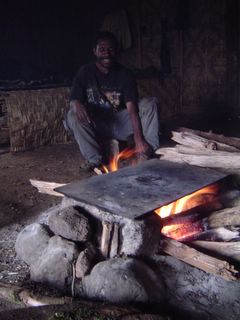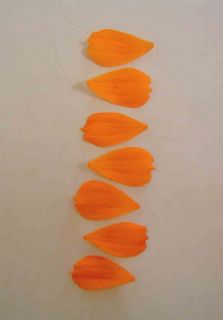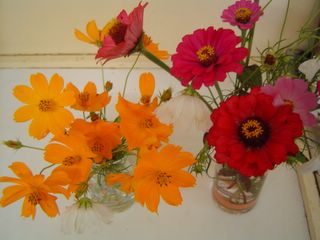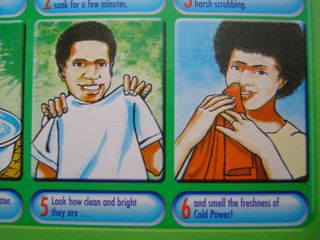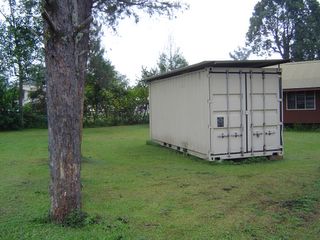Mt Wilhelm, mum told me, is 4,509m. Take sufficient food; warm clothing; hat and sunscreen; some people get altitude sickness. Best to take a guide. Start of the track is muddy in the wet.
I’m not sure exactly where the start of that track is. The track I was on started in Goroka. On Friday I met up with the boy from Lae in a red pmv (public motor vehicle; like a minibus) at the markets. The pmv was going to Mt Hagen, but we were getting off before that, up at Kundiawa. This track was sealed (bitumen aaaaallllll the way, Muecke would say); no mud.
It took about 45 mins to get going. First the pmv’s caller had to shout ‘hagenhagenhagenhagenhagen’ (one word) out the door, then the driver would do a big u turn and on the other side of the – rather narrow – road, the caller would holler again, ‘hagenhagenhagenhagen’. This had to be repeated again and again in the (slightly hysterical, it seemed) hope that someone (just, incredibly, might not have heard and) might get on. So we circled for a while and he hollered for a while; we did a loop around town to pick up a big sack of something, which two men heaved and pushed and squeezed and eventually squashed into the back of the pmv; then we circled some more and eventually it was decided that there were enough people on board to make tracks.
We drove out through North Goroka. I hadn’t been out of this side of town before, and certainly not this far; (kindly) having been given the window seat, with big eyes I watched the country we went through. Past some dusty market (with the obligatory red-green-blue-yellow panelled golf-sized umbrellas sheltering sitting people and sellable goods from the sun; no one seems to like plain umbrellas here), through some villages, past a couple of tin shed shops with their SP or Milo signs. The road climbed and skirted hills which grew bigger and steeper and revealed themselves as mountain ranges; slopes covered in rich, fresh greenery – grasses and tress, and here and there, neatly sliced out, market gardens; and then we’d round a corner and the foliage would be dominated by tree ferns.
(The soundtrack was bad 80s tunes c/o fm radio. at least it wasn’t enya.)
We made a stop midway. The sun was shining; people got out and stretched their legs and drank water from a natural spring leaking out of the hillside. Later, after we’d been driving for a while again, we paused by the side of the road and the caller collected fares; we started driving again then paused to let someone off, then started again then paused again to pick up another passenger, then started again then slowed down as a man on the side of the road approached. The passenger who was the latest addition to the pmv shouted out from the back seat not to stop, to drive on, drive faster; this roadside man, he said, had killed someone (maybe even two). Everyone on the bus had big eyes now. The driver was hesitant, but he didn’t stop, and after that the speed increased and we continued driving upwards. The next pause – sweet contrast – was for a Good Friday procession, as a big crowd of people walked along the road, someone up the front carrying a cross.
And soon after that we reached Kundiawa – dusty and glary. There were lots of people around, but not a lot actually live in the town; it’s the centre point for many surrounding villages. It looked like a frontier town, but I was in and out within half and hour and wouldn’t really know. And what’s a frontier town in PNG?
This was the start of another kind of track. We needed to get on another pmv here, one taking us as near as possible to Mt Wilhelm. The pmvs we were looking for left from the markets, but when we arrived there were none in sight. We hovered there for about 20 seconds, and a guy started talking to the boy from Lae; within a few minutes it was established that this man was returning to his village for the long weekend, and happened to be going exactly where we wanted to be. He told us a pmv would be along in about 10 mins, and sure enough, it was. This was Martin; he is a secondary school teacher and, may I say, friendly, generous and very hospitable. Thumbs up.
Another kind of track, another kind of pmv. This time we got into a 4WD twin cab thing (ok ok, I don’t really know cars either) – ready to sit in the tray with everyone else, but ushered by Martin into the back seat. The back tray filled up; I turned and through the back window I could see legs and bags. Some people stand right behind the cabin, others sit down squished in amongst legs and arms and market goods. A mother with a new looking baby and a quiet child sat in the front passenger seat; and off we went, down an unsealed road that curved left behind the markets and headed into serious 4WD territory. The track wasn’t too muddy at first; mostly one lane wide, and initially on either side were grasses about 2.5 or 3m high. Soon they fell away and there was tropical forest, or pine trees, or solid rock. I stared at it all; whereas before we had skirted the mountains, now we were up close.
So the time passed pleasantly and we drove along the twisting track, getting higher. We crossed a few bridges, maybe two, with solid frames and some type of metal plates as a base to drive over. No problems. The next bridge, though, this one up ahead, wasn’t so promising: it had the solid frame, but no metal plates. Instead there were halved tree trunks, secured to the frame horizontally – well, for about two-thirds of the bridge’s length. The first third of the bridge – the section the pmv was now approaching – had a few skinny trunks chucked on the frame, totally haphazardly. And not secured at all.
And so the pmv paused, and we all stared at the bridge, at the driver, at the skinny planks, at the drop beneath the skinny, unsecured planks. The wheels might miss the planks; the weight and force of the vehicle might cause the planks to scatter, or break; would the pmv get stuck or fall through? Now, these reflections occur in hindsight; there wasn’t time to think about what might happen. We looked, then the driver went for it. And the leap of faith failed; the pmv leapt forward and the logs slipped and the front of the vehicle went down.


